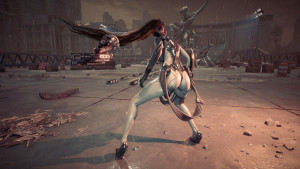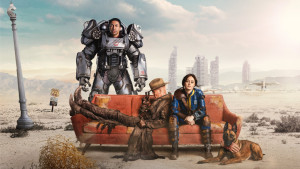Please support Game Informer. Print magazine subscriptions are less than $2 per issue
Nintendo Considered Including A Naked Costume In Zelda: Tri Force Heroes
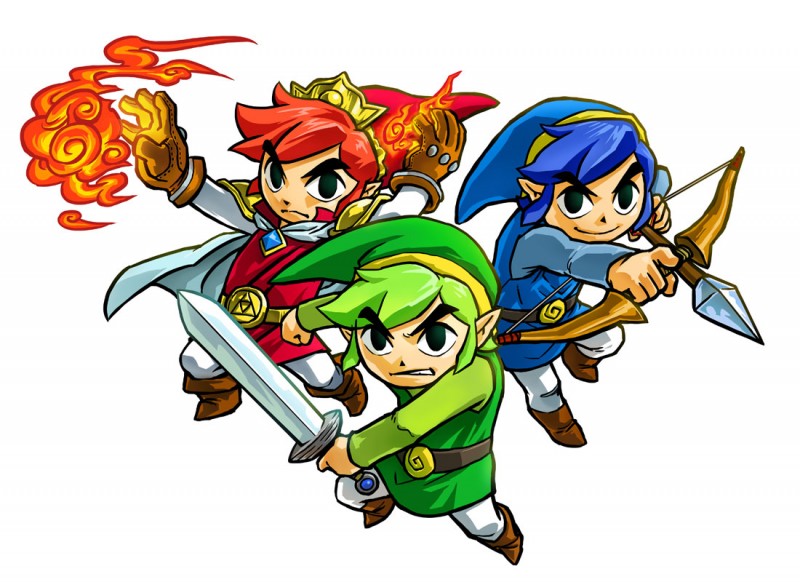
Link’s latest adventure, a multiplayer follow-up to 2013’s A Link Between Worlds, was a departure for Zelda’s traditionally single-player focus that was met with mixed critical reception. We spoke with the Tri Force Heroes’ director Hiromasa Shikata and Zelda series producer Eiji Aonuma about the game, its place in the pantheon of Zelda, and what costumes didn’t make the final cut.
Game Informer: What are you wearing?
Shikata: [Laughs] As much as I would like to join you in the joke here, unfortunately at this interview I just got off work so I am not wearing any sort of Zelda or Link costume today. I had to go to work, so I’ve got my regular work clothes on.
Aonuma: You’re wearing a necktie. You’ve always been a little formal since the time you started with the company, it’s been pretty normal for you to wear a necktie. Myself, on the other hand – I don’t know that I have ever worn a necktie. It’s not something I normally do. That being said, I do have on a nicer shirt today, a nice white dress shirt, so we’re pretty much ready to go. A little casual, but a little more dressed up than normal.
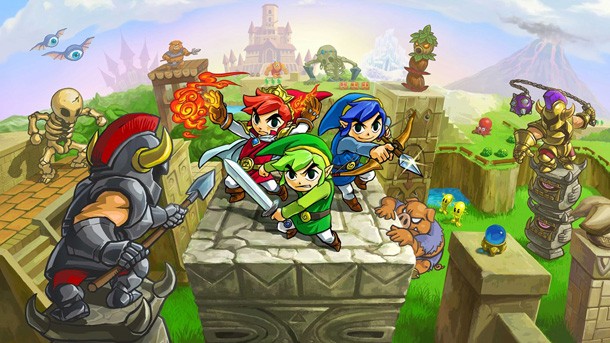
Where does Tri Force Heroes take place in the Zelda timeline?
Shikata: It falls in the timeline a few years after A Link Between Worlds. At the beginning of Tri Force Heroes, the character who reads the billboard that says, you know, heroes wanted basically, which you’ve seen if you played the game, make no mistake – that is the hero from Link Between Worlds.
Majora’s Mask used many of Ocarina of Time’s art assets in order to streamline development. Was that the case here, following A Link Between Worlds?
Aonuma: More so than saying it’s the art assets or the game world, it’s more about the game system, so with Majora’s Mask we really looked at what we had developed with Ocarina of Time and they wanted to go back and use that same system, doing something with masks, and sort of streamline that development time, and again reuse some of the things we had already created.
Shikata: When we finished up A Link Between Worlds, we looked at the game engine and Mr. Aonuma had talked with the team about wanting to create a multiplayer Zelda game and really wanted to take a look at whether or not that system was something they could use to accomplish that goal. So more than art assets or visiting the same worlds, it’s more about does a game’s engine and system we have work with this next idea and do they match up? And in this case they did.
For cut costumes and the identity of the Link look-a-like in front of the castle, head to page two.
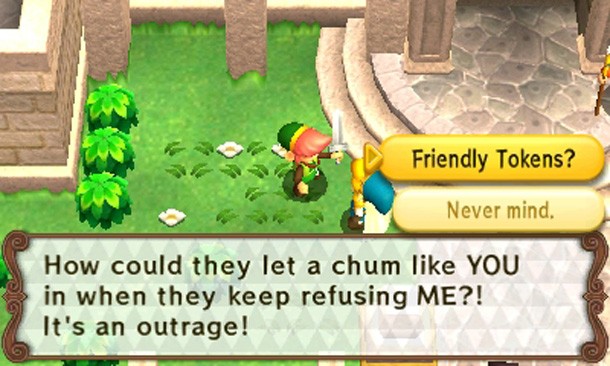
There is a character in front of the castle that wants to be a hero who has pink hair, brown sleeves, and looks a little like a previous Link. Is he a reference to Link to the Past’s Link?
Shikata: We really hadn’t thought about it being a throwback character, or a link to that previous character – I said link, sorry – but if you look at the way his hair is parted, his ears and sideburns, he has sort of the conditions by which one can be judged a hero for the Legend of Zelda. The hair is always parted the same way, the same pointed ears, etc. If you look, his design is just a little off from that, so they did have that in mind to make him not quite a hero. As far as the pink hair goes, I guess that was just random chance that he happened to have pink hair in the same way the character you referenced does in Link to the Past.
Did Destiny with its retrieve items, redeem them at home base, head back out into the world mechanics influence Tri Force Heroes in any way?
Shikata: I know of Destiny, but I have never actually played it. So, none of the structure of Zelda was based on that game at all.
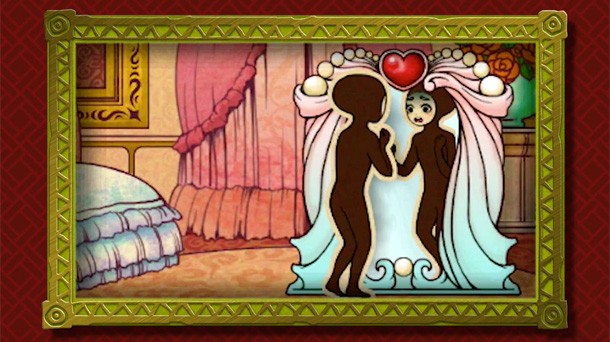
Princess Styla speaks at length in an online trailer, which is odd for a Zelda princess. Were you involved in the decision or selection of giving her a voice?
Aonuma: No touch [laughs]. Nintendo Japan had nothing to do with the American marketing plan. We had no influence or involvement on that trailer at all. I do remember having a discussion though, about the Japanese trailer, which has the King Tuft speaking. I asked, “Why can’t the king speak in the American trailer?” and the people we were speaking with said, “No, no. We really think the princess is best for this,” so I said, “Well, if you insist, go ahead.”
Were there any costumes that didn’t make the final cut?
Shikata: I’m sure you’re familiar with the tale of the Emperor’s New Clothes, where the Emperor is told he has the most wonderful fashion ever, but he is actually naked. We wanted to implement some sort of outfit that would play off of that story, but we couldn’t come up with any abilities that that outfit would add, so they really weren’t able to bring that idea to fruition. We were really were disappointed that we weren’t able to implement it and bring it into the game.
For our review of The Legend of Zelda: Tri Force Heroes, head here.









